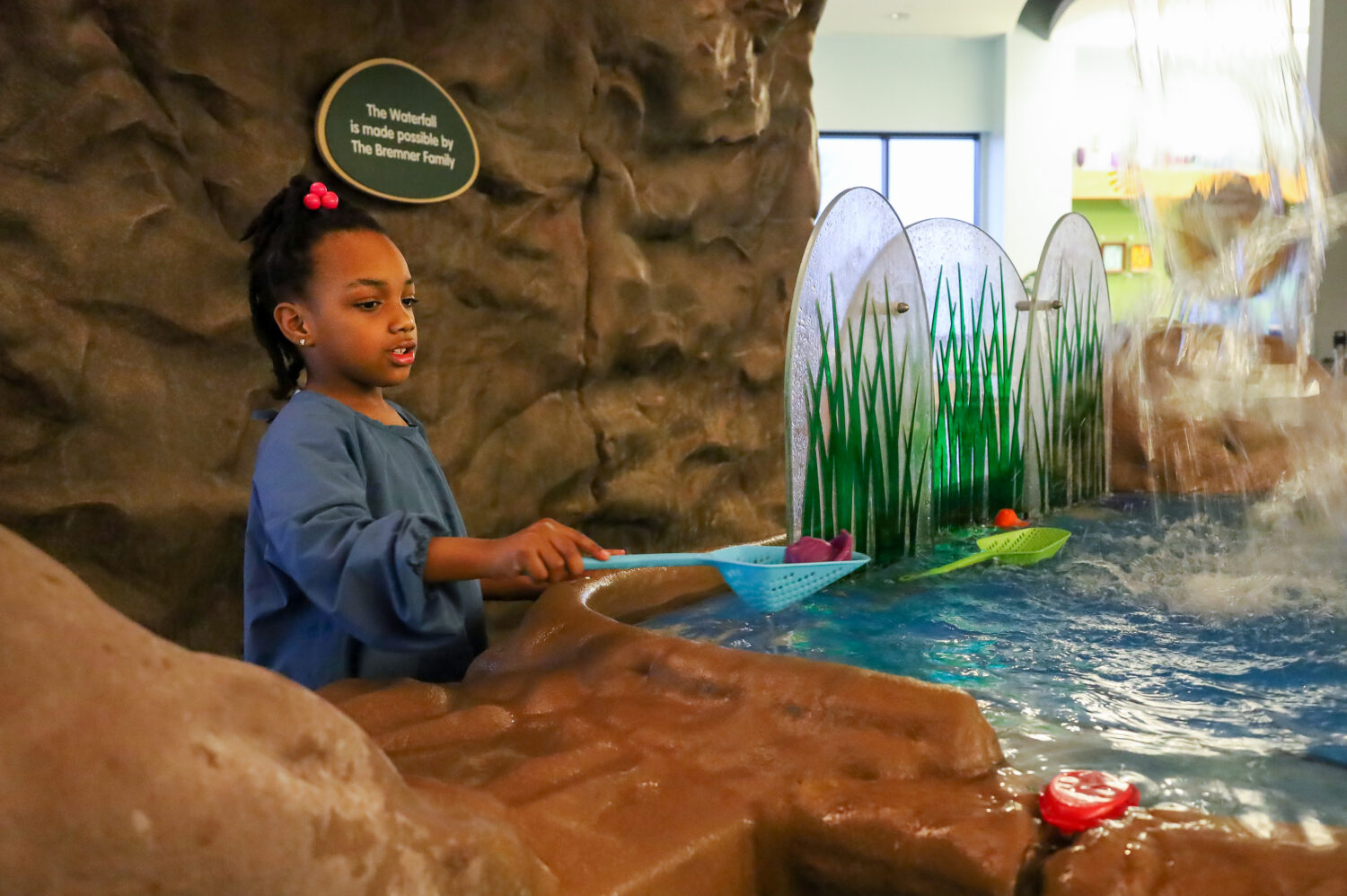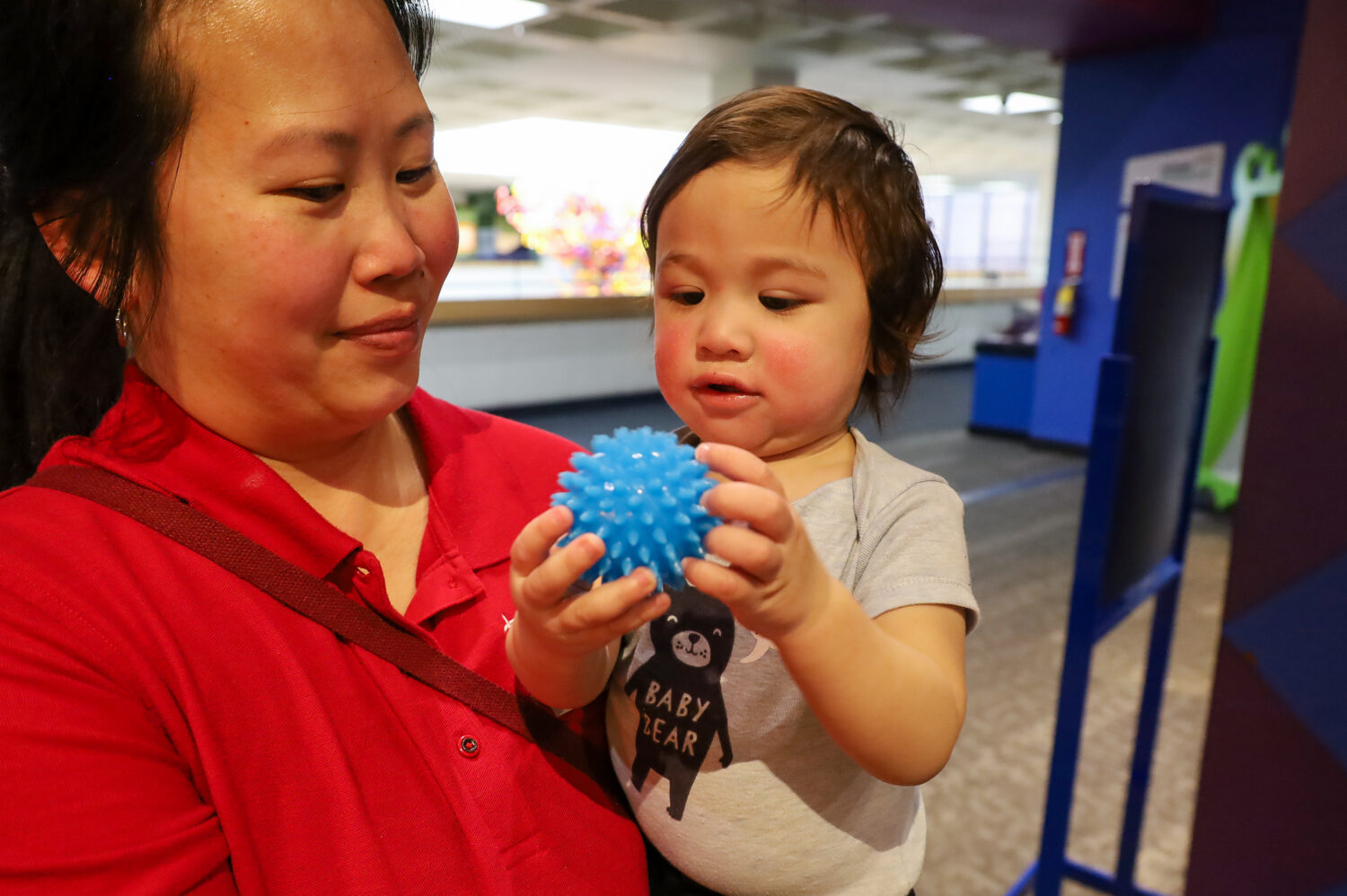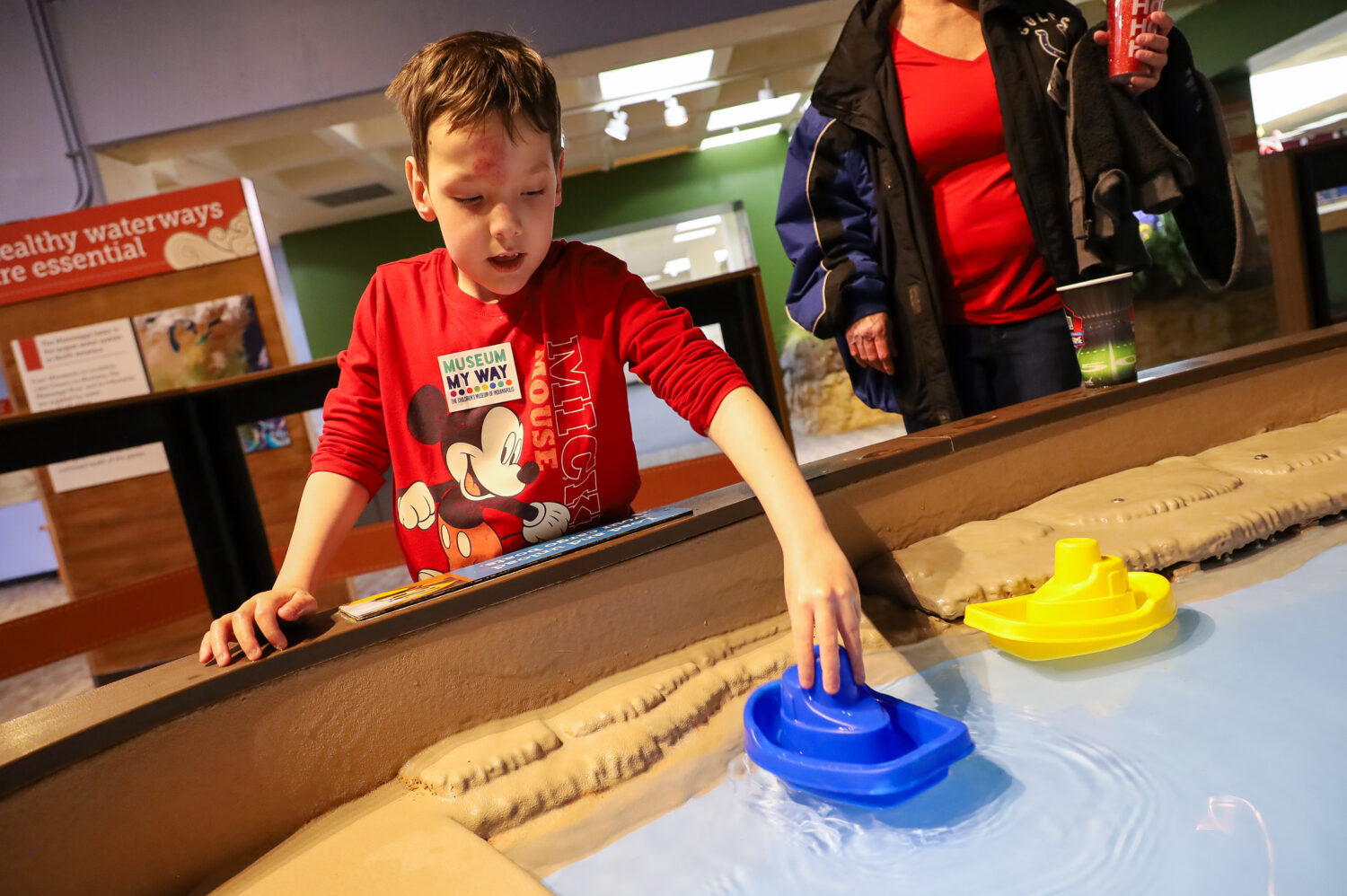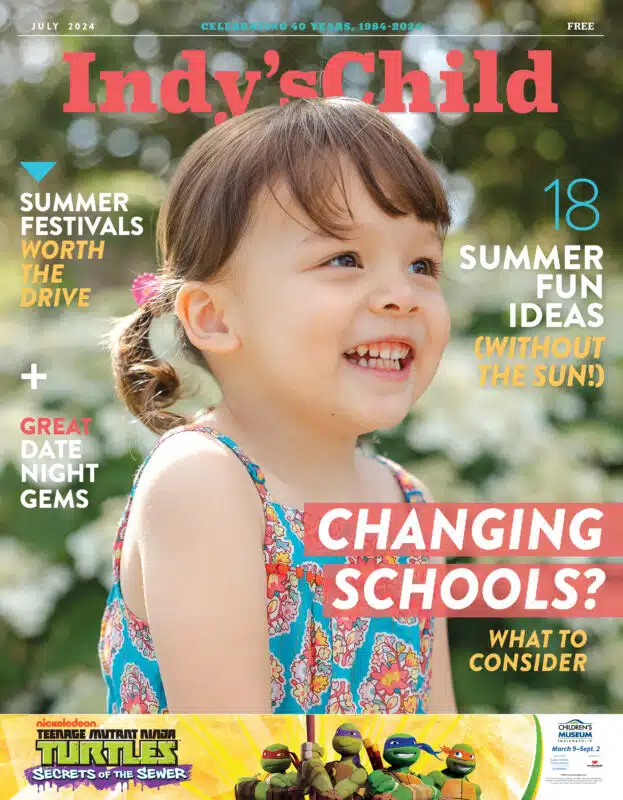Just as every child has a different personality and body type, every child has different needs, including children on the autism spectrum. “Many autistic children do best with a highly structured routine,” says Dr. Leah Van Antwerp, occupational therapy LEND coordinator with Riley Child Development Center. “It helps them feel more comfortable because they know what to expect and they have a routine to help them understand what happens each day.”
Preparing for a Museum Visit
Doctors suggest preparing for visits to museums and attractions in advance. For example, if planning a trip to Riley Children’s Health Sports Legends Experience, show your child how to throw a ball or pedal a bike. Explain how they can use different kinds of balls at different places — shoot a basketball through a hoop, kick a football through a goal or toss a baseball to another person. Then, explain how pedaling a bike is similar to pedaling a car on the race track: You move your feet on pedals and it helps you move forward. The more they know, the more comfortable they will feel.
Pack your own on-the-go fidget bag, which will give your little one something to focus on when they need a diversion or are feeling uncomfortable in a new situation. Fidgets provide familiarity and can give kids a sense of security by giving something they recognize. Pop-it toys help kids with repetitive motion. Kids can push the dot and know to expect a specific sound or sensation as it pops. Another option is to sew a sensory mat or buy one online. These typically have different textures — some mats make sounds while some have zippers. Make your mat unique by choosing items that interest your child. Remember to keep the items safely secured to avoid choking hazards. Give your child a special bag to keep their mat in so they can take it in the car, to the store and even on visits to museums.
If your child gets frustrated and feels like they aren’t able to do what they want to, help them through simple steps that build up to the final goal. My son is 18 and I still tell him that an inch is a cinch and a yard is hard. That reminds him that tasks are easier when he takes things one small step at a time.
Including Your Child in the Planning
Everyone likes to feel included and part of the fun. Before your visit to The Children’s Museum, check out the online sensory map, ask your child which activities they are most interested in and talk to them about it. Celebrate your time by being specific about tasks or goals you are proud of them accomplishing. Many other museums around Indiana have sensory-friendly offerings, too. For more ideas, visit childrensmuseum.org.
Museum My Way
To address the different needs of its visitors, The Children’s Museum will host “Museum My Way” four more times in 2023. “[Museum My Way] is an adaptive museum experience that is created for visitors with disabilities and/or sensory sensitivities to experience the museum in a new way,” says Betsy Lynn, accessibility manager at The Children’s Museum of Indianapolis. ”Limited capacity and sensory modifications are features of the event, where families and groups of all abilities are welcome to play and learn together.”










